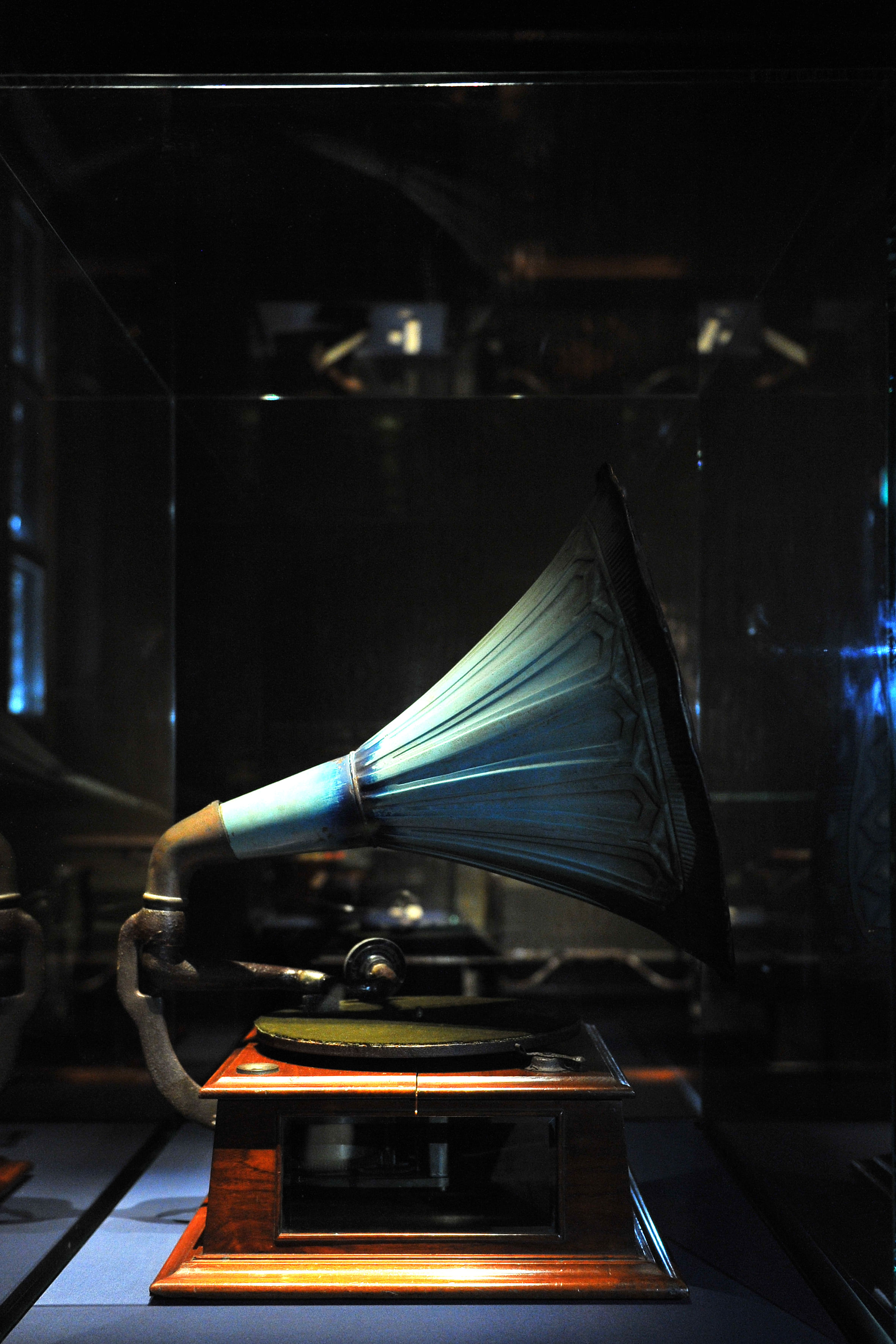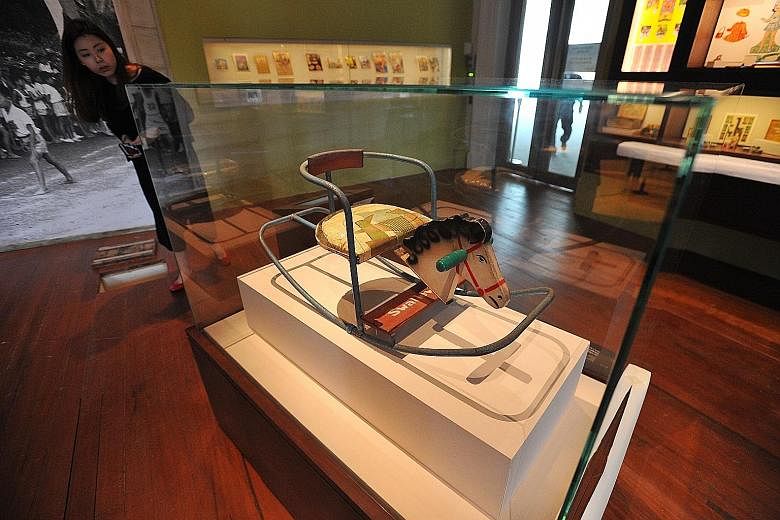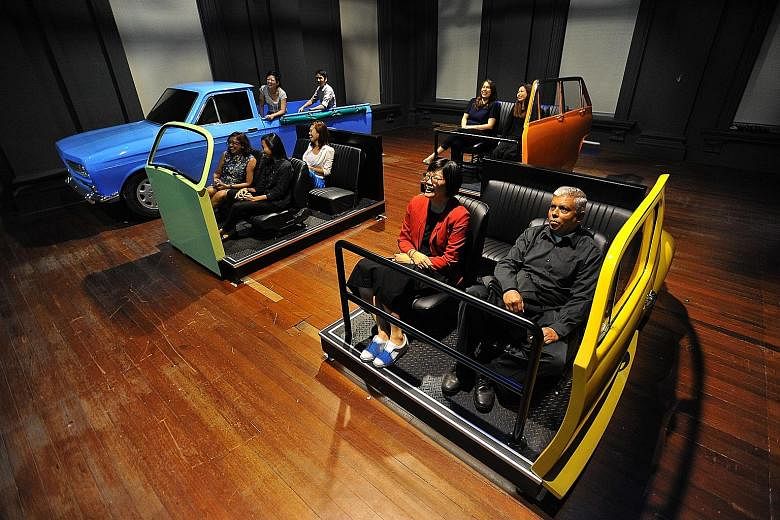Following a $10-million facelift that began last year, the National Museum of Singapore is opening its six new permanent galleries this weekend.
The revamped galleries are what used to be the History Gallery and other galleries themed around fashion, food, film and photography. Having been around for almost 10 years, they were dated, static and in need of an update.
Now these tired galleries have been given a boost in both style and substance.
Style, in that the new galleries present content in more creative and immersive ways. For example, visitors can experience Singapore's only open-air drive-in cinema in Jurong by sitting in cars and watching a montage of archival clips put together by local film- maker Eva Tang.
Substance, because the galleries have dramatic new inclusions in their displays, such as war heroine Elizabeth Choy's clothes - a well-cut beige collared shirt and black skirt - when she was arrested and tortured by the Japanese.
Other important new exhibits are the table on which the British signed the surrender papers; a barrister gown worn by founding Prime Minister Lee Kuan Yew; and a 1959 flexi disc of national anthem Majulah Singapura by the late composer Zubir Said.

The revamp coincides with the Republic's 50th anniversary celebrations. More than 1,700 artefacts are displayed in the new galleries.
Museum director Angelita Teo hopes the refreshed exhibits will give visitors a livelier and more comprehensive overview of the country's history.
The idea, she says, is to celebrate multiple voices in the nation's narrative, while making the museum-going experience fun.
The Singapore History Gallery, which is sprawled out over one level, goes through different shifts in tone and atmosphere as it traverses 700 years of Singapore's story. It also draws heavily from personal stories and experiences.
For example, in the area dealing with the Japanese Occupation, crumbling walls evoke the atmosphere of war-time Singapore.
Visitors sit in vintage chairs, positioned next to old-fashioned telephones that play audio recordings of interviews with survivors recounting what key moments during the war were like.
-
VIEW IT /NATIONAL MUSEUM OF SINGAPORE'S NEW PERMANENT GALLERIES
WHERE: National Museum of Singapore, 93 Stamford Road
WHEN: 10am to 6pm daily; open till 7pm this weekend
ADMISSION: Free for Singaporeans and permanent residents; for international visitors, it is $10 (adults); $5 (children above six, students with valid student pass and seniors 60 years and above). There are different charges for selected blockbuster exhibitions
INFO: www.nationalmuseum.sg
Curator Iskander Mydin, who is also the museum's deputy director of curation and collection, says: "We did not want it to look like a history textbook. We had access to a lot of material and the challenge was to bring in the different voices while covering 700 years in one gallery space."
A seamless narrative takes visitors into the key periods of the nation on level two of the museum. These are presented as Modern Colony (1925-1935); Surviving Syonan (1942-1945); Growing Up (1955-1965); and Voices In Singapore (1975-1985).
Modern Colony is housed in what feels like an old black-and-white bungalow. Using stunning costumes, jewellery and table setting displays, it evokes the drama and romance of those years.
This gallery comes complete with a display of elegant cheongsam and gowns that were worn by middle-class women of the era. A selection of women's footwear, ranging from bound-feet cloth shoes to Western high heels, shows the cultural diversity at that time.
Ms Chung May Khuen, lead curator for this gallery, says: "Singapore was very progressive in the way people dressed, partied and even travelled. We wanted to showcase these stories and find fresh ways of bringing them alive."
From here, Surviving Syonan marks a shift in tone. Things turn grim as the curators drew on experiences of wartime deprivations such as rationing and also resilience.
Particularly poignant is a story of a Chinese couple who got married during the war years. Now in their 90s, Mr and Mrs Lai Kok Wah loaned the museum a wedding basin, traditionally part of a Chinese bride's dowry, their marriage certificate and wedding rings.
Apart from these, the Goh Seng Choo Gallery on Level Two, which hosts the William Farquhar collection of natural history drawings, has also been given a makeover.
Besides the rotating exhibits drawn from the Farquhar collection, this gallery now has specimens borrowed from the Lee Kong Chian Museum of Natural History.
It opens with the Desire And Danger exhibition, which features Farquhar's drawings of flora or fauna that possess aphrodisiac or poisonous properties. The drawings are juxtaposed with actual specimens of their subjects, such as the rabbitfish and the breadflower, to explore the relationship between man and nature.
Outside of the galleries, other museum upgrades include the reinstallation of artist Suzann Victor's popular swinging chandeliers.
To introduce these changes to the public, there will be an opening carnival this weekend with activities such as playing dress-up in vintage costumes and guided tours.
Ms Teo says: "We hope everyone will take time in this shared space to discover more about our history, explore how far we have come and reconnect with the Singapore story."
Regular museumgoer Mary George Rajkumar, 52, says: "I am most excited to finally see a permanent, well-curated, visual history of South-east Asia and Singapore baring its painful but intricate post-colonial journey.
"So many messages and stories are waiting to be reinterpreted by the viewer in that spectacular space."



